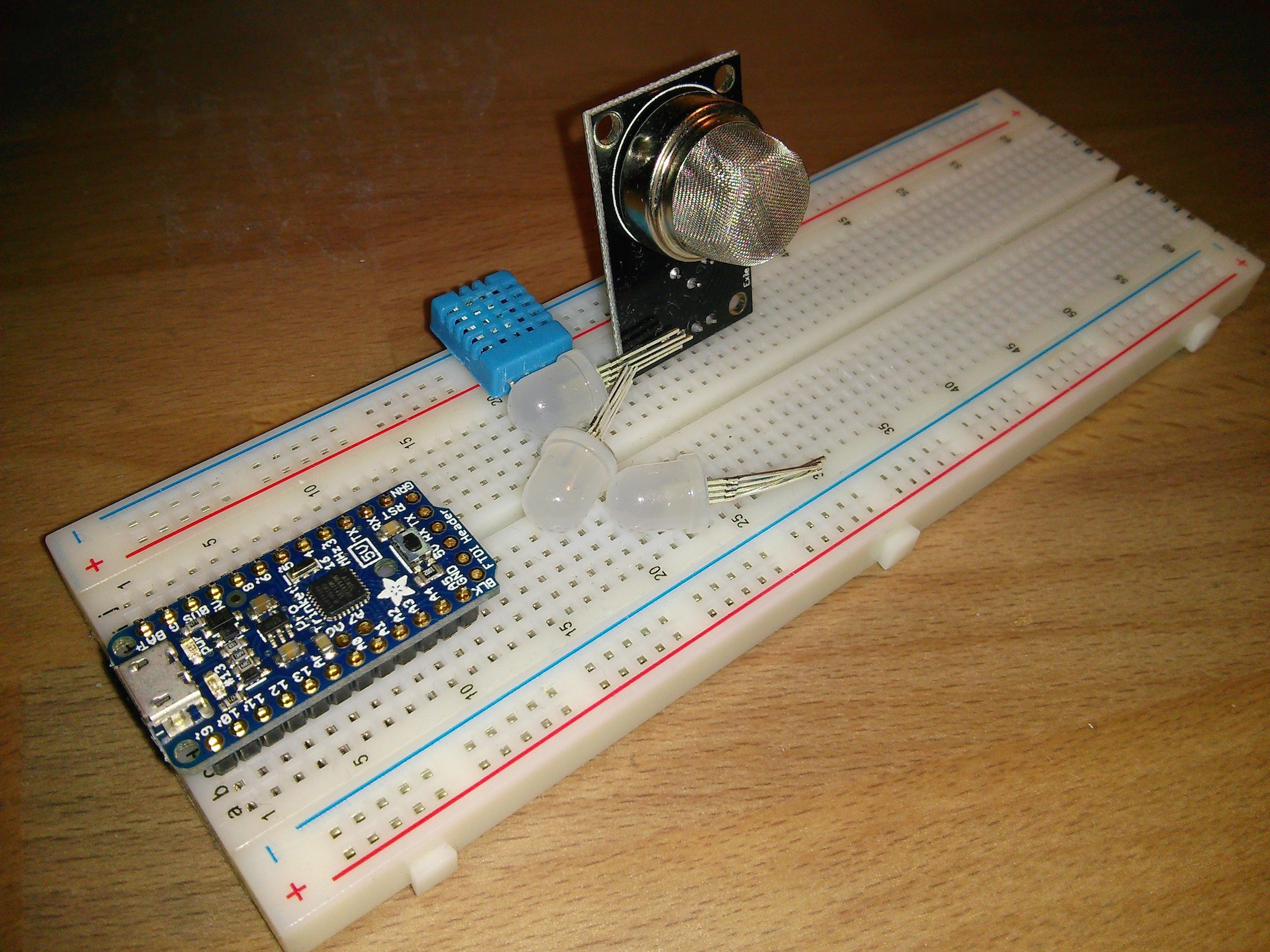For most of us, living and working indoors is a daily reality and with it the fact that indoor air quality is not always the best. We might start out in a fresh and well ventilated room but when we stay in it for hours the climate gets worse and worse. Like the metaphorical frog that gets boiled in the pot we do not notice until we lack concentration or even get ill.
Sniffing trinket aims at giving us these senses and raise awareness for a good indoor climate. In particular I aim for having the following features in the device:
* An air quality sensor: I will start out with an MQ135, because it is cheap and easily available. It is sensitive to a couple of harmfull trace gases but mostly on CO2 (more on that later). Since it has the same form factor as a couple of other sensors for specific trace gases this part can be customized to the specific needs of the user.
* An humidity sensor: I will start with the DHT11 but will design the project so that it can also accomodate the better resolution DHT21/DHT22.
* A temperature sensor: This one is included in the humidity sensor. We will see how accurate they are, otherwise I will switch to an extra sensor like the LM35 or a One-Wire type.

With those sensors, the main parameters of indoor air quality should be covered. Of course it is necessary to have a feedback to the user. On the bare minimum I foresee three different output types:
* Visual output: Three RGB LEDs for the different parameters: Depending on the measurements the give a visual feedback on the air quality. In some situations this is all you might need.
* USB output: This gives the measurements continuously either as HID (keyboard) to a computer or via a serial interface.
* Alarm pin: A pin where you can attach a external device (eg. a buzzer) that gets switched once a threshold is reached.
I have ideas to include options for two other output methods depending on the number of pins I have left on the trinket and other constraints - let's see.
As a user input we will have a single pushbutton for putting the device to sleep or in different modes.
The idea is to have all of this on a PCB the size and shape of the trinket itself (a trinket shield of sorts) which should make a great portable form factor. For power I foresee mainly a 5V USB connection but I also plan for an optional battery power option, most likely with a 9V because this is easy to incorporate and at least 5V are needed for the MQ135 as it seems.
Of course, all of this is on a very tight schedule. I have almost all of the components available so I will proceed as follows:
1st week of December: Component testing and schematic
2nd week of December: Board layout and ordering
3rd week of December: Software programming
4th week of December: Documentation and finishing up
Let's cross the fingers that this works out somehow.
Discussions
Become a Hackaday.io Member
Create an account to leave a comment. Already have an account? Log In.